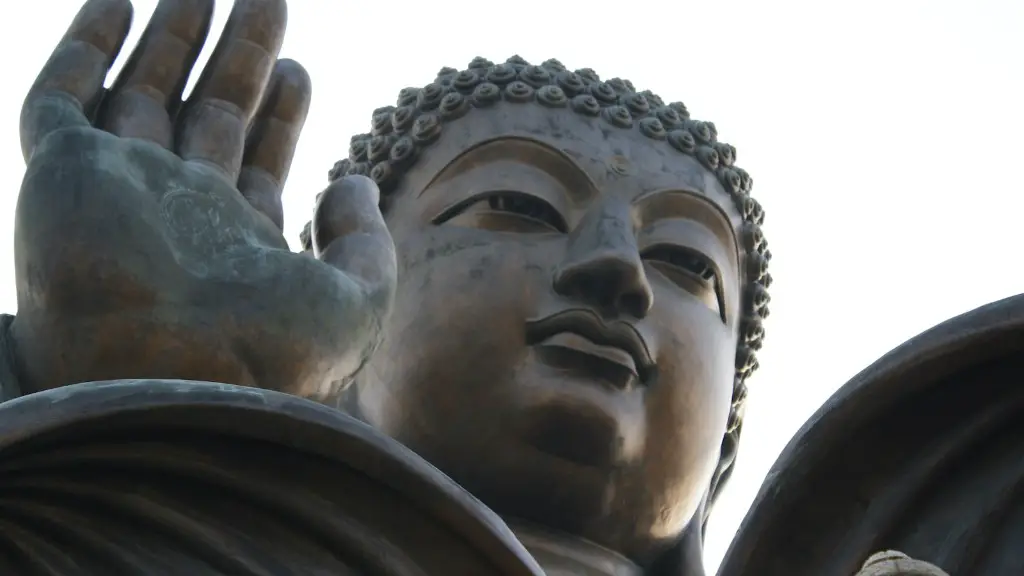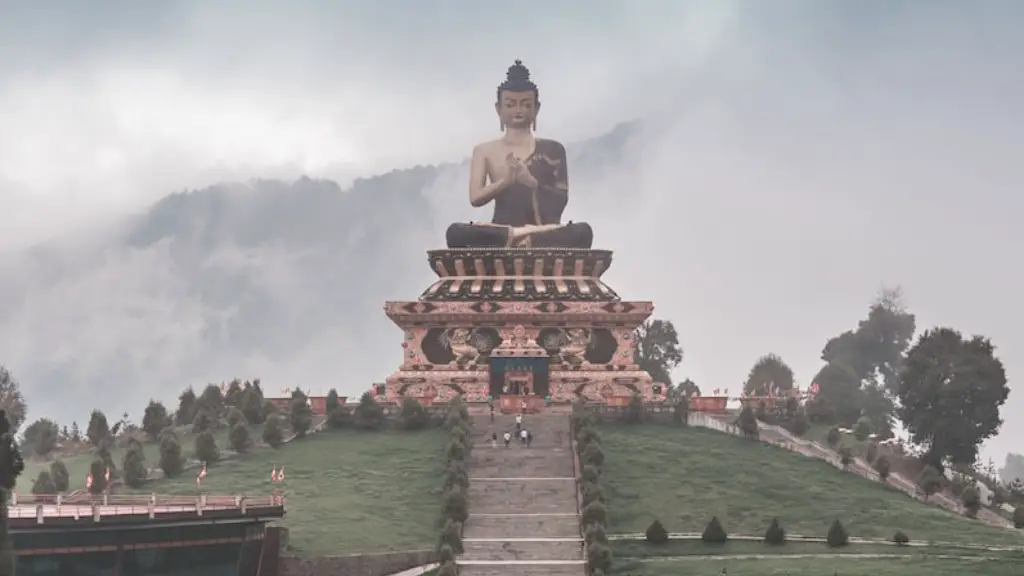Buddhism is a religion and philosophy that began in India with Siddhartha Gautama, also known as the Buddha, in the fifth century BCE. Siddhartha Gautama was born into a wealthy family but left his life of luxury to search for truth. He meditated for many years until he finally attained enlightenment and became the Buddha. The Buddha then began teaching others how they could also achieve enlightenment and find liberation from suffering.
Buddhism teaches that the root cause of suffering is ignorance and that liberation from suffering is possible through enlightenment. The path to enlightenment is through the Eightfold Path, which includes right view, right intention, right speech, right action, right livelihood, right effort, right mindfulness, and right concentration.
Taking refuge in Buddhism means taking refuge in the Three Jewels: the Buddha, the Dharma (the Buddha’s teachings), and the Sangha (the community of monks and nuns). In taking refuge in the Three Jewels, we commit to following the path of enlightenment and liberation.
“To take refuge in Buddhism, one must accept the Three Jewels: the Buddha, the Dharma, and the Sangha. One must also take the Five Precepts and live a moral life. One must also study the teachings of the Buddha and meditate.”
How do Buddhists take refuge in the Buddha?
Buddhists take refuge not in people, places and things, but in the 3 jewels of Buddha, Dharma and Sangha. The 3 jewels are often referred to as the Triple Gem, and they are the most sacred objects of worship for Buddhists. To ‘take refuge’ may refer to the formal, ceremonial act of becoming Buddhist by taking the refuge vows.
Buddhists believe that taking refuge in the Three Jewels – the Buddha, Dharma and Sangha – is the key to liberation from suffering. The Buddha is the supreme teacher who showed the way to enlightenment, the Dharma is the truth that he taught, and the Sangha are the community of his followers who help us to follow the path. Taking refuge in the Three Jewels is a way of making a commitment to our own spiritual development.
What does it mean for a Buddhist to take refuge
In the Buddhist tradition, the purpose of taking refuge is to awaken from confusion and associate oneself with wakefulness. Taking refuge is a matter of commitment and acceptance and, at the same time, of openness and freedom. By taking the refuge vow we commit ourselves to freedom.
The Triple Gem is the most important thing to Buddhists. It represents the Buddha (the teacher), the Dhamma (the teachings), and the Sangha (the community). These are the three things that Buddhists rely on to find the path to enlightenment.
What are the 3 steps to a Buddhist path?
The Path is a guide to living a good life, divided into three themes: good moral conduct, meditation and mental development, and wisdom or insight.
One of the oldest ways of expressing faith in Buddhism is by taking refuge in the three jewels, also known as the triple gem and the three treasures. The three jewels are the Buddha (the exemplar), the dharma (the teachings), and the sangha (the community of practitioners).
What are examples of refuge?
Refuge is a place where you can go to escape danger or unpleasantness. It can be a physical place, like a building or a country, or it can be an emotional place, like a relationship.
When we take refuge from a storm, we’re looking for a safe place to wait out the danger. When refugees take refuge in another country, they’re looking for a place where they’ll be safe from persecution.
The Five Precepts are a set of ethical guidelines for Buddhists to follow. They are:
1. Refrain from taking life
2. Refrain from stealing
3. Refrain from sensual pleasure
4. Refrain from lying
5. Refrain from taking intoxicants.
Do Zen Buddhists take refuge
In Theravada and Tibetan Buddhism as well as Zen, the practitioner takes refuge in Buddha, Dharma, and Sangha. This basic practice is found in many different branches of Buddhism. The act of taking refuge is a way of showing respect and devotion to the Three Jewels, and it is also a way of affirming one’s own commitment to the Buddhist path.
The precepts are one of the foundations of Buddhism and are a set of commitments to help develop mind and character. The precepts are meant to help us progress on the path to enlightenment by teaching us to abstain from killing living beings, stealing, sexual misconduct, lying and intoxication. adhering to these precepts will help us to develop strong moral character and make progress along the path.
How do you use refuge?
A “refuge” is a place of safety or protection. It can be a physical place, like a building or a country, or it can be an abstract concept, like a person’s religion. When people are in danger, they will often take refuge in a safe place.
Buddhist Renunciation is in a nutshell “a deeply rooted and skilful aversion to suffering, Samsara, and for taking another rebirth.
How do Buddhists release attachments
There are a few things we can do to help us let go of the things we are attached to. Meditation is one way to help us be more present and aware of the moment. Compassion, interdependence, and accepting expansiveness are also ways to help us let go of attachments.
A safe place is a place where you feel protected from danger or harm. This can be a physical place, like a home or a safe room, or it can be a more abstract concept, like a place where you feel emotionally safe. When you’re feeling unsafe, it can be helpful to have a safe place to go to feel better.
Can a Buddhist hug?
There is no one definitive way to practice hugging, but the general consensus is that you should hug the person you are holding close to you and make them feel very real in your arms. This means being mindful of your breathing and hugging with all of your body, spirit, and heart.
1. Clear Viewpoint: Don’t just believe anything just because you saw it or you heard it. Question what you see and hear, and look at things from different perspectives. This will help you develop a clearer understanding of the world around you and find true happiness.
2. Values: We end up digging a hole so deep that it is hard for us to find a way back home. Happiness comes from leading a life with strong values and principles that you can be proud of.
3. Words that Inspire: Actions in Positive Direction. Be inspired by the words of others, but don’t just sit and listen. Take action and head in a positive direction.
4. Efforts with Impact: Be mindful of your efforts and make sure they are having a positive impact on those around you.
5. Concentrate Right: Put your focus and concentration into things that will help you move forward in life and make you happy.
Warp Up
In order to take refuge in Buddhism, one must first understand the Three Jewels of Buddhism: the Buddha, the Dharma, and the Sangha. The Buddha is the founder of the religion and the Dharma is the teachings of the Buddha. The Sangha is the community of monks and nuns.
In order to take refuge in the Buddha, one must believe that the Buddha was a historical figure who attained enlightenment and taught a path to liberation from suffering. In order to take refuge in the Dharma, one must study the Buddha’s teachings and put them into practice in their own life. In order to take refuge in the Sangha, one must respect and support the monks and nuns who live a life dedicated to the practice of the Dharma.
The Three Jewels of Buddhism are the Buddha, the Dharma, and the Sangha. Taking refuge in the Buddha means taking refuge in the awakened one, in the one who has realized truth. Taking refuge in the Dharma means taking refuge in the teachings of the Buddha and the path to enlightenment. Taking refuge in the Sangha means taking refuge in the community of those who are following the path.



